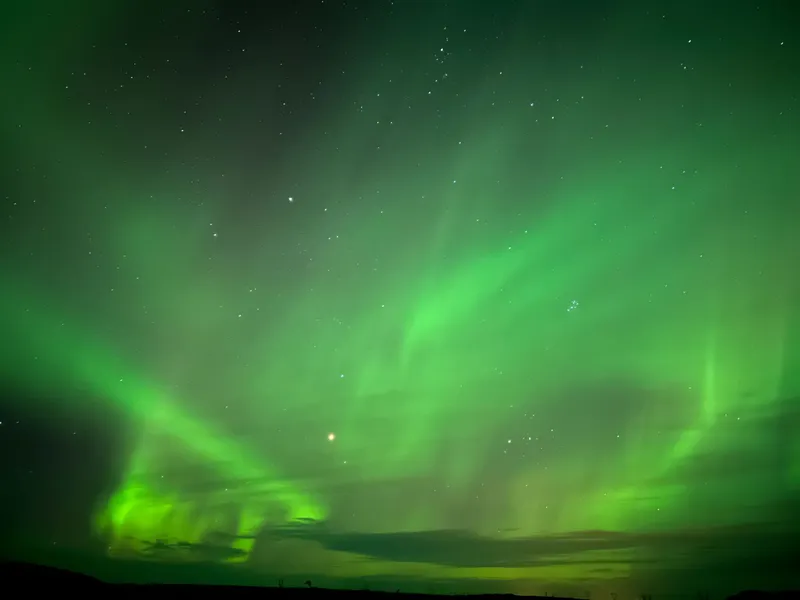You’ve heard so many stories about the Northern Lights, you’ve seen photos and videos of them, and now you want to go see them in person. Congrats! It is one of the most spectacular shows that our planet puts up for us.
I’m going to start with the bitter truth: the Northern Lights are not always present on the sky and forecasting them is not that easy! The good part is that you can maximise the chances of seeing the lights with a little bit of knowledge.
Is The Sky Dark Enough?
If the sky isn’t dark there won’t be enough contrast between the sky and the lights for an amazing show. Thus, the first thing for a good Northern Lights forecast is to make sure that the sky is dark enough.
Northern Lights Season
The Northern Lights season is usually between September and April. That’s not because the lights are not on the sky in the other months, but because the sky is not dark enough to see them. You can’t see the lights on a blue sky with the sun shining. As you can see in the images below, there is no night in Iceland’s capital, Reykjavik, between the 10th of April and 2nd of September.
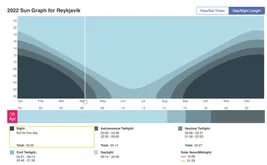
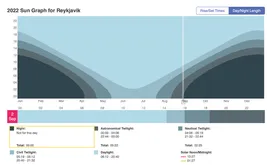
In the dark season, you will have to wait for the sun to set and the sky to get dark enough in order to start seeing the lights. If you are lucky to witness some very intense Northern Lights, they will become visible before the sky gets pitch black. However, for an amazing show you just be patient, and be prepared.
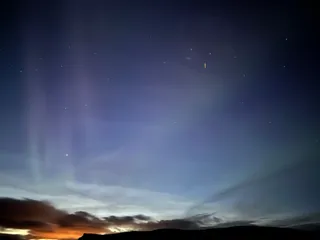
Light Pollution
Strong sources of light like cities can make the sky very bright. They won’t cover the aurora, but trust me, you want to be away from them. If you have a rented car, then hop on it and drive few kilometers away from the lights. The darker your surroundings, the more stars you’ll start seeing and the higher chances to get a better visual spectacle.
Cloud Coverage
Unfortunately, you will not be able to see a thing if there are clouds on the sky. You might still see something if there are only some high clouds, but it will not be the best view anyway.

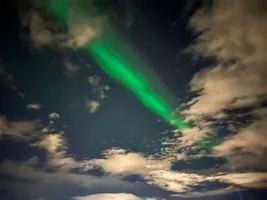
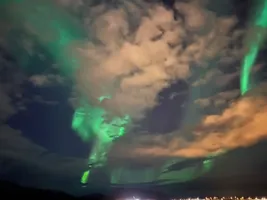
Sometimes you can run away from the clouds. You just need to check a map with the cloud coverage forecast and see if you can spot a clear area relatively close to you. We did this several times and it paid off. However, we wouldn’t recommend driving too far away from your accommodation because you might be sleepy on your way back and you don’t want to have a long drive.
There are multiple sources where you can check the cloud coverage forecast and thus make a better forecast for the Northern Lights:
- Icelandic Met Office - green means clouds, not the lights; a map full of green is a bad sign.
- Aurora Forecast Website
- My Aurora Forecast app on iOS and Android
- Any weather forecast application - we usually use Windy and AccuWeather
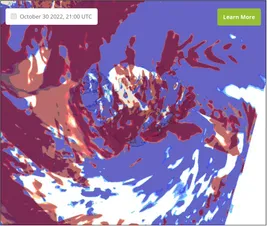

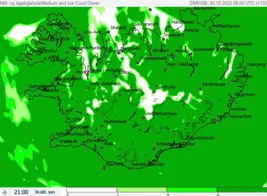
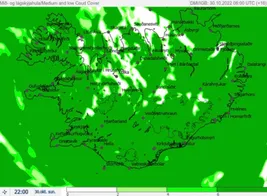
A cloud coverage forecast like the one above is not promising at all. There might be a slight change of seeing something somewhere in the North, but nothing in the rest of Iceland.
Solar Activity
The solar activity plays the most important role in seeing the Aurora and forecasting the Northern Lights. No matter the darkness of the clouds, if there is no solar activity, then there is nothing to see. Unfortunately, it can happen.
This is our third Aurora season, and it is by far the most intense we had. The first time we were barely able to see some very shy lights in 3-4 nights out of an entire month we spent in Iceland. Some people travel just to see the Northern Lights and they end up seeing nothing. So you have to be realistic and don’t set up high expectations. It’s better to get surprised than dissapointed. You cannot forecast the Northern Lights long term, but usually you can get an idea of what to expect for the next 2-3 days.
KP Index
The KP index shows the disturbanced in the Earth’s magnetic field caused by the Aurora. Theoretically, a high KP index forecast means that you will see a light show.
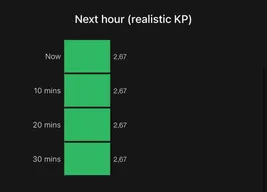

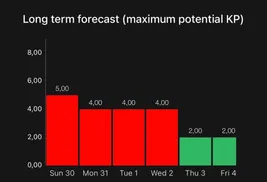
In practice we found the KP index forecast to be extremely unreliable for seeing the Northern Lights. We’ve seen beautiful Northern Lights when KP index was 1 or 2, but we sometimes haven’t seen ANY lights when the KP index was 4 or 5. Even so, never miss a night with a high KP index, if the weather allows.
Interplanetary Magnetic Field - IMF
The Northern Lights are happening thanks to the Earth’s magnetic field. Our planet’s magnetic field protects us from the solar winds and creates this amazing light show that we all love. However, not all solar winds will contribute to the creation of the Northern Lights, but only those with a high IMF.
The Interplanetary Magnetic Field is the magnetic field that gets carried by the solar winds from the Sun, through the Solar System and hits the Earth’s magnetic field. In other words, the interplanetary magnetic field is a component of the Sun’s magnetic field that gets pulled away from the Sun by the solar winds.
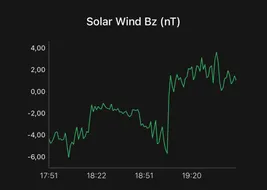
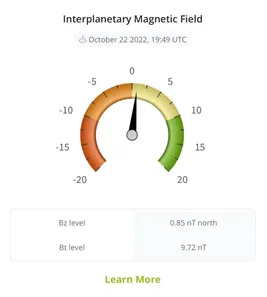
There are 2 measurements of the IMF: Solar Wind Bz and Solar Wind Bt. What we can say for sure is that negative values of the Solar Wind Bz are very likely to produce a beautiful aurora.
Solar Wind Speed Forecast
We’ve all seen videos with the dancing Norther Lights. Well, the lights don’t always dance. Sometimes they are almost still to the naked eye or they are moving extremely slowly. What makes the lights dance is the Solar Wind Speed. The higher the solar wind speed, the faster the lights.
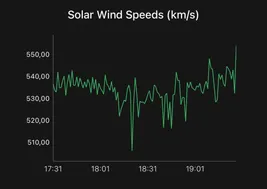
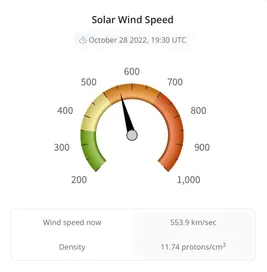
The Solar Wind Speed is not a predictor of the presence of the aurora on the sky. You might witness some intense lights even if the solar wind speed is low.
TL;DR for Solar Activity
If KP index or IMF have promising values go look for the Northern Lights. Reds are the most promising values, while greens are the least promising. If you see something close to the images below, then you should be outside.
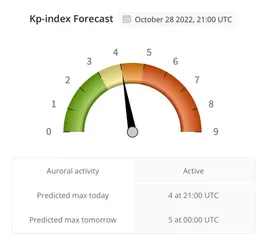
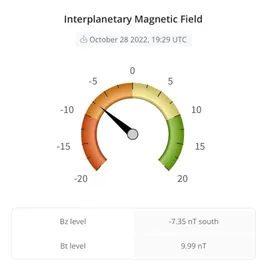
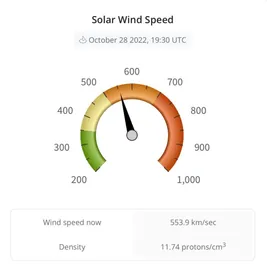
Our Personal Takeaways
There is still not enough knowledge among our planet’s top scientists in understanding everything about the Northern Lights (Earth’s magnetic field and solar explosions). No one can be 100% sure what will hapen this night.
Always go out when you can
Whenever the weather permits, and you are able to find an area with clear sky, go look for the Northern Lights no matter the Solar Activity.
A forecast is just a forecast. It is next to impossible to predict any solar explosions, solar winds, and the IMF. We can only see them as they happen, meaning real time. So if you’re not out there when a solar wind with high IMF is approaching the Earth then you will likely miss it.
Patience. Patience. Patience.
Don’t expect to see the aurora immediately once you got out. Dress up warmly, take some hot drinks and snacks with you and be patient. On clear-sky nights we usually spend around 3 hours per night looking for the aurora.

The lights are sometimes faded, they lit up and dance, then they fade again just to come back and dance a bit later. If you go out for 30 minutes to an hour only, you might conclude that there’s no aurora when the best show of the season might be just 20 minutes away.
Examples Of Chasing The Northern Lights
We’re currently chasing the Northern Lights every single night that we have with some clear sky. We’re taking notes every evening about our experience, and we will soon start posting them for you to see some examples of how chasing the northern lights goes. Stay tuned!
 Travelfoss
Travelfoss
Related Travel Articles
- Northern Lights Forecast - Aurora Borealis
- How to Take Photos of the Northern Lights with Your Phone Camera - Aurora Borealis
- How To Stay Warm While Photo Shooting The Northern Lights - Aurora Borealis
- The Diary Of 24 Consecutive Days Of Northern Lights Chasing - Aurora Borealis
- Northern Lights Myth Busting - Aurora Borealis
- 7 Most Common Northern Lights Chasing Mistakes - Aurora Borealis
- How to Photo Shoot The Northern Lights With Your iPhone - Aurora Borealis
- 7 Unique Travel Destinations for 2024

Writing free, independent and personal travel content since 2021. If you appreciate what we do, then you can return the favor by using the affiliate links below.
- Get your accommodations on Booking.com
- Buy your gear and gadgets from Amazon
- Book flights using Expedia
- Book activities on Get Your Guide
- Book guided trips on G Adventures

Writing free, independent and personal travel content since 2021. If you appreciate what we do, then you can return the favor by using the affiliate links below with no cost for you.
